Sanyo, a Japanese manufacturer, embraces global supply chain diversification with its innovative Paper Mille-feuille product. While targeting international expansion, especially in the US, the company grapples with labor challenges due to Japan's aging population, driving automation and IoT adoption. Although paper packaging gains eco-awareness, it hasn't significantly impacted demand. Sanyo's diversified product range, including jigsaw puzzles, sees plans for expansion, and the company upholds quality standards through incentives and training in Japanese and overseas production. As a second-generation president, the focus is on securing a thriving future under third-generation leadership, emphasizing global expansion and social contributions.
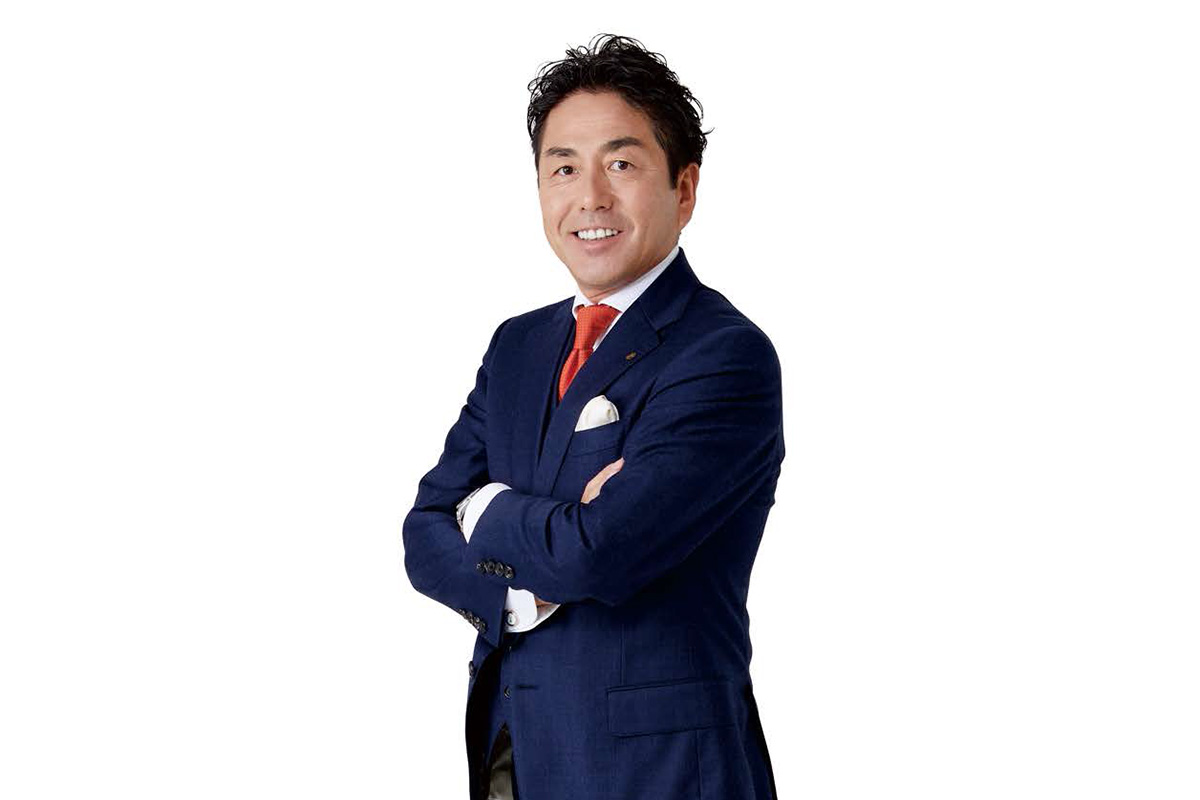
The Japanese manufacturing industry is currently in an exciting time. After three years of logistics obstructions caused by Covid-19, foreign companies are looking to diversify their supply chains, and known for their reliability, Japanese companies are in a great position to benefit from this situation. This is especially the case given that the JPY is currently at its lowest compared to the USD. Do you agree with this statement, and what are the advantages of Japanese suppliers in this current macro environment?
We started exporting our products overseas very recently. Our Paper Mille-feuille is the product that we are actively trying to launch in the overseas markets. Currently, we have bases in Cambodia and Vietnam and they are playing a key role in our overseas expansion. We are focused on exporting “Made in Japan” and “Made by Japan” product quality across the globe. My father was the founder of the company. In our company’s name, “Sanyo” means “three oceans,” as it was my father’s dream to expand and become a dominant player in overseas markets. In two years, we will be constructing a new factory, as there is a growing demand for stable paper supply with many of our customers struggling with overseas suppliers. The supply from overseas is not stable due to the supply chain disruptions. As a result, our customers told us many times that if we were able to increase our production capacity, they would be willing to send us more orders. That is why we decided to open a new factory near our headquarters to cater to this increase in demand from our customers for a stable supply of paper from Japan.
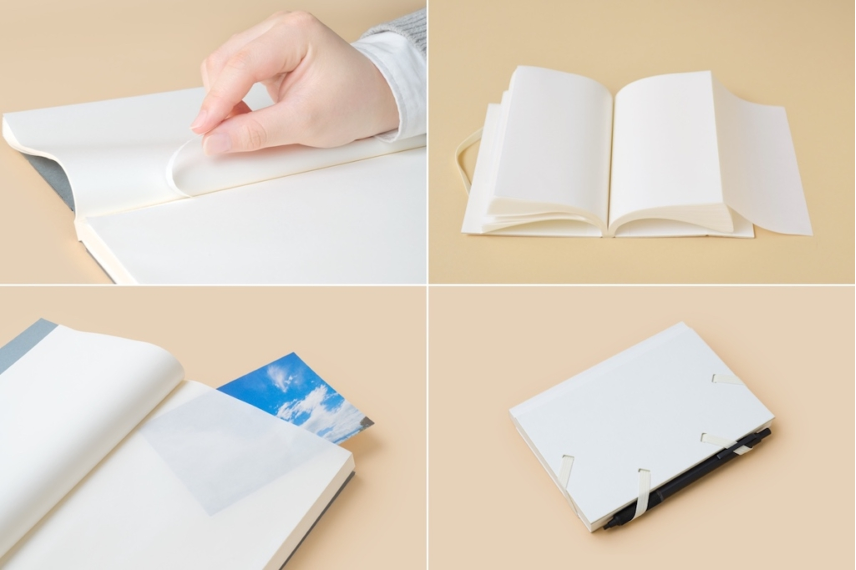
Paper Mille-feuille products
You just mentioned that you are planning to further expand overseas. Are there any specific locations where you would like to open a factory or establish partnerships with local distributors?
We established our Cambodian factory eight years ago. Our target was to increase our business in Asian countries such as Indonesia, China, and Thailand. However, we recently found out that the North American market has a lot of potential for us, as the biggest customers for our Paper Mille-feuille products are in the US. Moving forward, expanding our presence in the US market will be our key focus.
In the next fifteen years, one-third of Japanese people will be over the age of 60. This could lead to a labor shortage as well as a shrinking domestic market. As a chusho kigyo, what are some of the challenges that this demographic shift is posing for your company, and how are you reacting to those challenges?
Japan’s population decline and the increase of its aging population are unstoppable and will continue in the future. As a company, this issue is quite challenging. One of the countermeasures is to introduce automation and IoT into our production and business operations. However, the increase in the costs of materials for paper and the rise in the base salary in Japan have made it more difficult to hire new employees and increase our profitability. This is not only the case for our paper business, but it is also affecting our jigsaw puzzle business which is one of our fortes. Jigsaws are considered a high-end toy. However, with the decline in the number of children being born, there is less demand for jigsaw puzzles, which means that we need to raise the prices. Due to this, our profitability has dropped. Therefore, we need to consider ways to balance out our profits by enlarging the market.
In recent years, paper packaging has attracted a lot of attention. In countries around the world specifically in Europe and the US, there are a lot of new regulations aimed at completely banning the use of single-use plastic. Furthermore, many food companies and supermarkets also want to reduce their environmental impact as consumers become more and more environmentally aware. One of the easiest alternatives that has been touted is paper. Do you believe in the potential of paper packaging, and what type of sustainable solutions can your company offer to a company that would like to switch from single-use plastic to paper products?
To be honest, at this moment we do not feel that this move towards the environment is contributing to the uplift in the demand for paper. In terms of our company portfolio, there has not been an increase in demand for paper packaging or paper bags. Hopefully, this move towards environmental friendliness will give us special added value as a company. As for our own environmental efforts, we are adhering to our SDG attempts and trying to reduce our carbon footprint through small activities such as garbage separation and the reduction of carbon dioxide through our daily actions.
In the 1990s, your company became a leading manufacturer of jigsaw puzzles. However, as mentioned earlier, fewer children are being born and therefore fewer children playing with jigsaws today. Despite this, you have been able to attain leadership in this field once again in recent years. How have you been able to reinvent yourself as a leader when it comes to jigsaw puzzles in a time when technology is overtaking classic board games?
The rise in the demand for jigsaw puzzles is not due to any factors related to our company. Rather the demand has increased due to external factors. In recent years Covid-19 forced people to stay at home. Jigsaw puzzles are an indoor activity and this has led to growing demand. Also, right after the Great East Japan Earthquake of 2011, sales of jigsaw puzzles increased due to the shortage of electricity. As many people had to stay at home, jigsaw puzzles became a source of entertainment. These external factors were the reasons for the increase in demand for jigsaw puzzles in recent years.
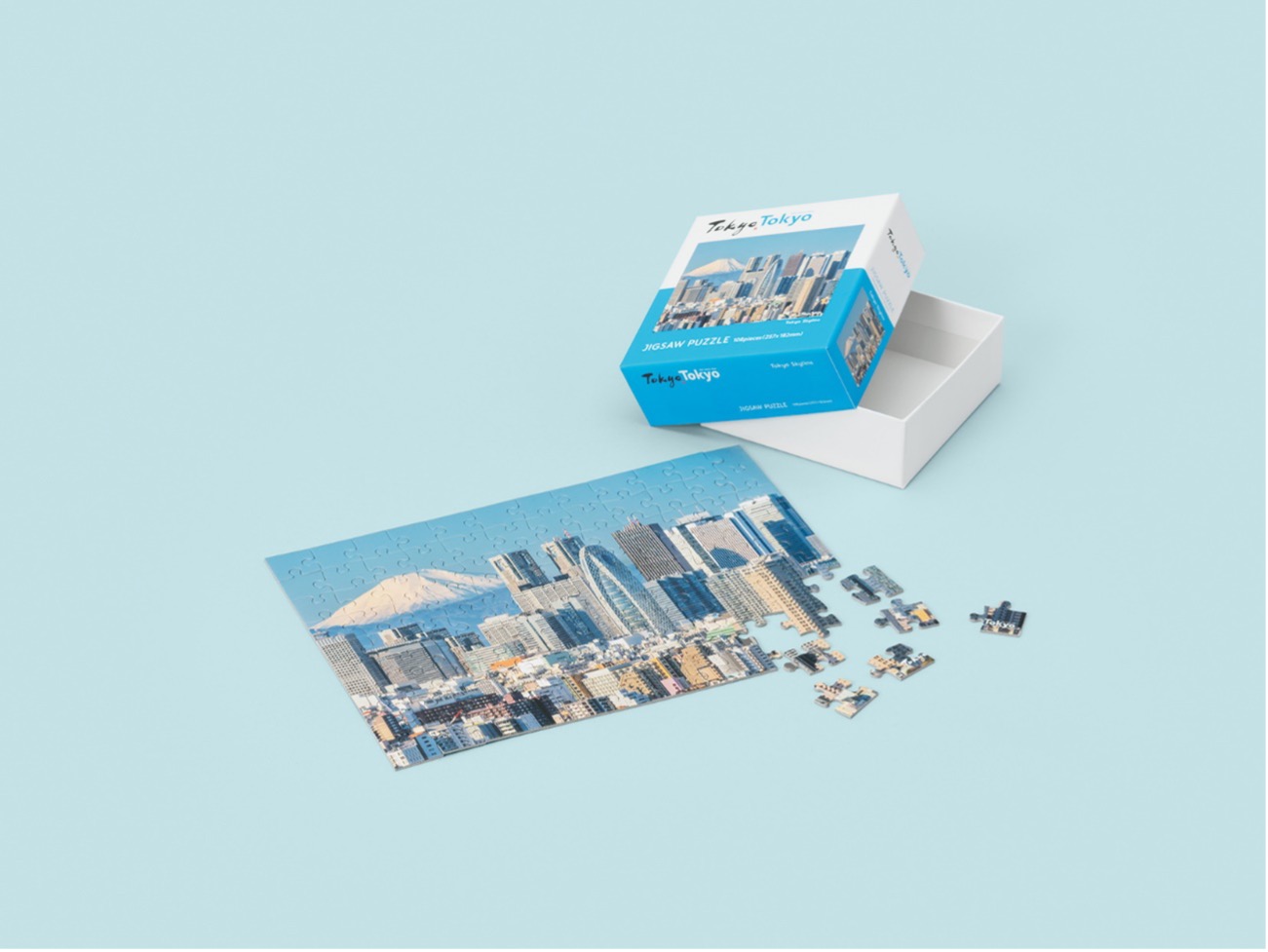
jigsaw puzzles
Given your company’s utilization of your innovative Paper Mille-feuille material across various business divisions, we have noticed its exceptional characteristics such as impressive strength and its unique warmth when compared to plastic or metal. Could you provide us with some insight into the advantages or distinctive features of your Paper Mille-feuille material and how it compares to the traditional materials in your product lineup?
Our company has a history of more than 50 years. However, until recently, our business model was order-based production and we did not have an inventory of our own. We realized that to expand and strengthen our product lineup, taking the risk of having an inventory was a necessity. We then started to develop new products under our brand name. It took one and a half years to create Paper Mille-feuille which is a crystallization of our accumulated history of more than 50 years.
At first, we used the Paper Mille-feuille technology to create a hard and sturdy paper that could be used to make wine shelves or trays for transporting food for example. However, we realized that those items were more like furniture and people had fewer opportunities to come into contact with and feel the quality and craftsmanship of our paper. We then decided to enter the stationary field as the users came into close contact with our paper. A notebook is a product that has a close relationship with the users. We decided to produce one-of-a-kind high-quality Japanese craftsmanship paper. Of course, globally speaking, there are companies such as Moleskine that are known for their notebooks. However, we are proud to show the world that our company has such high-quality craftsmanship and technology and can provide one-of-a-kind notebooks with special features such as embossing.
As part of your clientele, you cater your services to companies such as Dainippon Printing and Tokyo Printing, which are major Japanese firms. You mentioned earlier that you are trying to penetrate the North American market. Are you looking to expand your customer portfolio to include the North American market or the overall overseas market?
We currently conduct our overseas business through agents and our payment settlements are in JPY. When it comes to the US, we also work together with an agent. We came to focus on the US after we exhibited for three days at an exhibition of Japanese companies led by Jetro. We exhibited at a Japanese pavilion called Japan Now, and we were able to raise over JPY 2 million in sales over the three days. We realized that if the product is of high quality, Americans decide to make a purchase on the spot.
One thing that we found quite interesting about your business was also that through the core strengths that you have when it comes to paper, you have a variety of divisions. We spoke about your jigsaw puzzles and your Paper Mille-feuille that is used in stationary, but you also make a series of packaging solutions such as shopping bags, hanging fixtures for shops, and gift boxes. Moving forward, are you looking to add new types of applications, and what applications do you believe have the highest growth potential for the future of the company?
At this moment, we are not looking to increase our product lineup, but rather we want to focus on what we currently have and expand within that product range. For example, with regard to Paper Mille-feuille, at first, our target was more high-end customers such as lawyers or designers who appreciate those unique products. We would like to make alternative applications so that children and ordinary people can have access to our products.
I am a very analogous person. I like to buy nice pens and I like nice notebooks with beautiful paper. What do you love the most about Paper Mille-feuille? What is it in its utilization that warms your heart?
The biggest strength of our Paper Mille-feuille is its design. Owning it makes you look cool. It comes in different sizes and different types. For example, you can place the biggest one on a table and use it to scribble down some ideas. It can also be used as a display and adds value to the atmosphere of the place where you live.
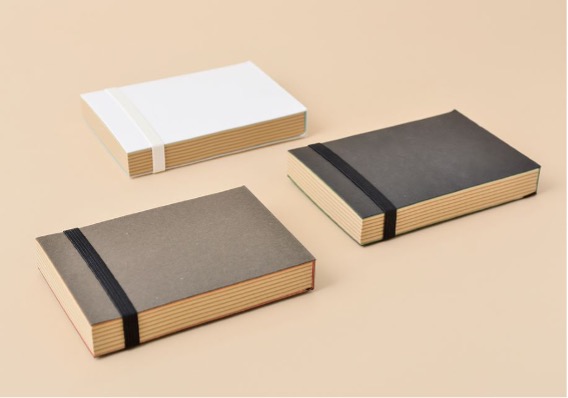
Paper Mille-feuille products
When it comes to your international operations, we know that you established two companies in Vietnam and Cambodia in 2015. Could you explain to us the advantages that those locations bring to your international business? Also, moving forward, what strategies will you employ to further grow and strengthen your international business? Will it be M&As, joint ventures, establishing a new factory, or opening new sales offices?
Currently, our overseas focus is to establish a high-quality and reliable production scheme at our factory in Cambodia and our representative office in Vietnam. We want to continue to elevate our quality and provide “Made by Japan’ products to the neighboring countries in the region where the population is booming such as Indonesia, Thailand, and China. Our focus is providing high-quality Japanese products to markets with growing populations. Once people know about and use our products, they will immediately know and understand the accumulated tradition and craftsmanship behind the products. Japan only has a population of 130 million people, so while it is very important to focus on Japan, expanding overseas is critical for our company’s sustainability. As I mentioned earlier, we are currently working with overseas agents. However, in the near future, we would like to go overseas by ourselves, and M&As and joint ventures are options that we will consider for our expansion.
One thing that is very clear about your company is that you want to bring Japanese craftsmanship or monozukuri into your products. Japanese people pay unique attention to detail that you can see and feel in the products that people purchase and use every day. Cambodia has a different culture and is a country at a different stage of development as well, so the attention to detail within the genba is not the same as it is in a country such as Japan. How do you ensure that the quality that makes your brand remains the same whether you manufacture in Japan or Cambodia?
Education and training are key for ensuring the quality remains the same. Quality control is also very important for maintaining the high quality of our products. One of the systems that we have in place is a payroll system in which the quality of the work affects how much our employees are paid. With this incentive, the people at our Cambodian factory have made tremendous efforts to uplift the quality of the products that are produced, as it allows them to have a higher salary. There are also fewer people leaving our company there. Our factory is headed by a Cambodian person. That has helped to improve the management of the factory and it has increased the motivation of our employees there. My impression of Cambodia is that it is a relatively young country. Our employees there are also very young. Compared to Japanese youngsters, they are very willing and eager. Once we offer them the opportunity, they work very hard to achieve their goals and seize that opportunity. This has been very important to the success of our Cambodian operation.
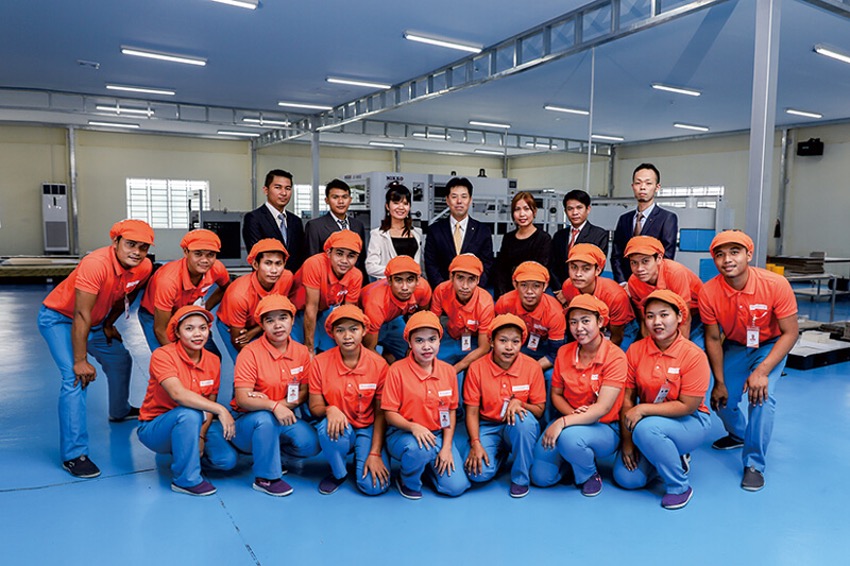
factory in Cambodia
You mentioned earlier that your father founded this company and that you are a second-generation president. Imagine that we come back to interview you on the last day of your presidency before you pass the company to the third generation. What ambitions or objectives would you like to have achieved during your time as president?
When I pass the baton to the third generation, I will be passing it to my son. I want the company to be reflective of its name “Sanyo” and to have gone beyond three oceans. When I do pass my role to my son, I will continue to support him and help him enrich our business operations further. Those are my objectives for the future.
We recently opened a café in Harajuku on September 18th. This café supports a village in northern Thailand called Mae Chanthai by purchasing their coffee beans. At the café, we offer coffee beans from northern Thailand, and all of the tables and chairs are made from our paper. It is now becoming a flagship shop for us. The coffee is named PAP Coffee which stands for “Paper & People.”
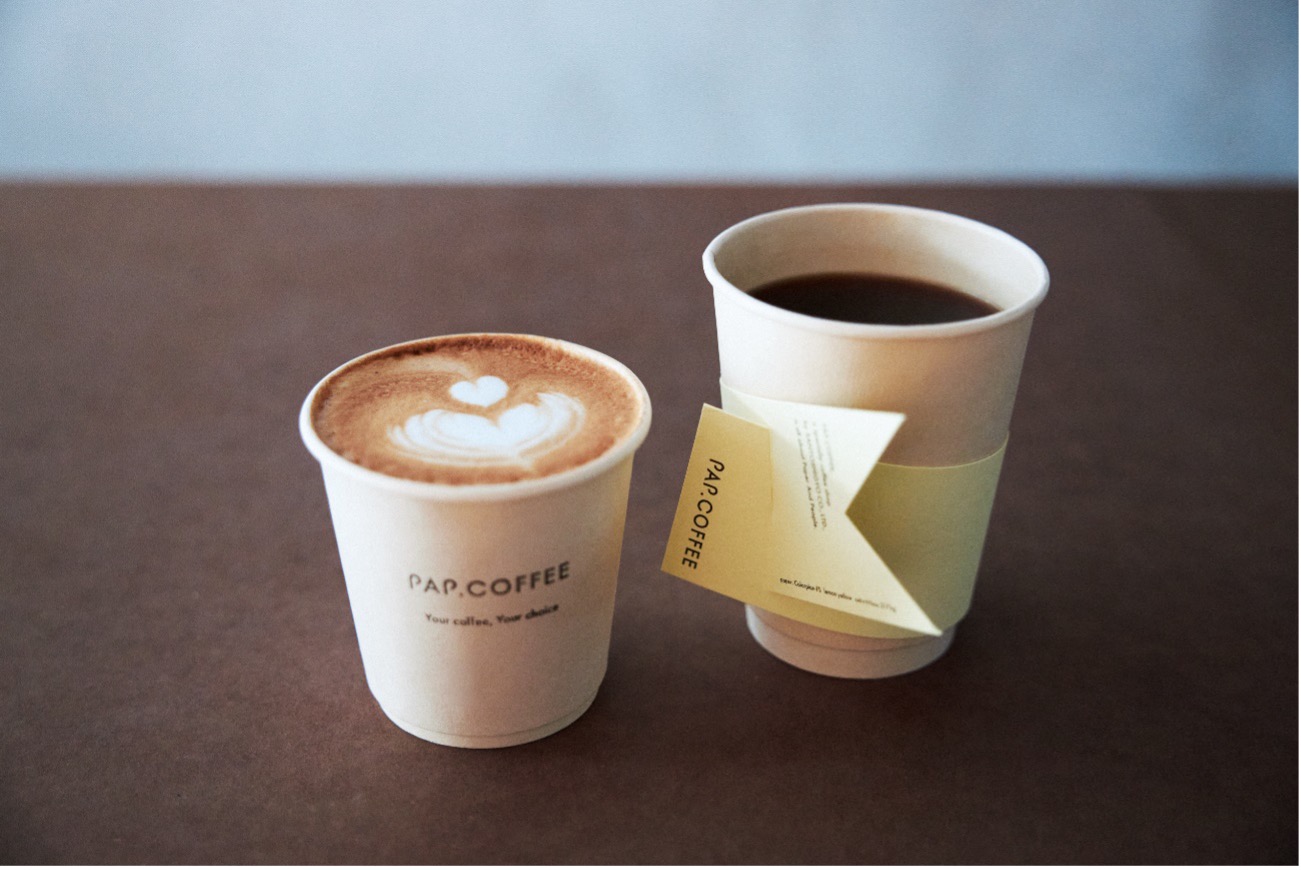
café in Harajuku
0 COMMENTS